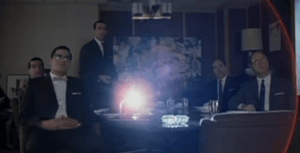24 Mar Are engagement and UX the new art and copy?
The exponential rise in internet use has led to fundamental changes in the advertising and marketing world with no end in sight: if anything, the rate of change is only accelerating. While some argue that the internet is merely another advertising medium, albeit with an unprecedented audience and reach, others point to a fundamental shift in the way that companies now interact with their customers. So this begs the question: Is having the right copy and artwork still enough? With the rise of affordable technology available today both could be replaced with the use of Photoshop and someone savvy enough to use it. Even with a website, your online presence must consist of more than merely loading all available information about your product and hoping for the best. Today you need to be aware of the new relationship between media, technology and user communities. To engage the internet consumer you need to provide a compelling user experience (UX).
There is a great scene in an episode of Mad Men where Don Draper delivers a pitch for a Kodak product, The Carousel. The way that he invokes nostalgia and family to sell what is simply a slide projector is a great example of user experience by deftly merging the associated sentimentality and emotion with the product. It is a vivid example of how user experience encompasses all aspects of the customer’s interaction with a company, its services and products. But how have things shifted since? Are Engagement and UX the new art and copy? How could Don Draper possibly pitch that product today?
Technology is a glittering lure, but there is the rare occasion when the public can be engaged on a level beyond flash, if they have a sentimental bond with the product.
A website, therefore, is not only a medium for providing information but must also have a clean, elegant and to-the-point design that anticipates a user’s needs and addresses them in an efficient, entertaining and comprehensive way. It needs to engage the customer by providing an interactive ‘digital experience’. In addition, this now occurs in the context of massive online communities where there is an ongoing dialogue between consumers. The community of Facebook users alone, for example, is over 500 million strong. Try to imagine a magazine with that sort of circulation! Your product can reach an undreamed of level of user awareness through the right ‘tweets’ or ‘likes’ but, make a mis-step, and your reputation can just as easily be destroyed overnight.
In this brave new world you cannot engage the fickle internet customer simply by creating the right copy and artwork (although you need these as well), instead it is vital to know your customer and his or her needs. This requires knowing and interacting with your customer at a significantly more sophisticated level than in traditional advertising. Customers now say ‘I will allow your product into my consciousness, but only so long as you do so in a way that entertains me and that is relevant to what I want’.
‘I will allow your product into my consciousness, but only so long as you do so in a way that entertains me and that is relevant to what I want’
For more tips on UX see the presentations from the WarmGun conference on Slideshare.



No Comments